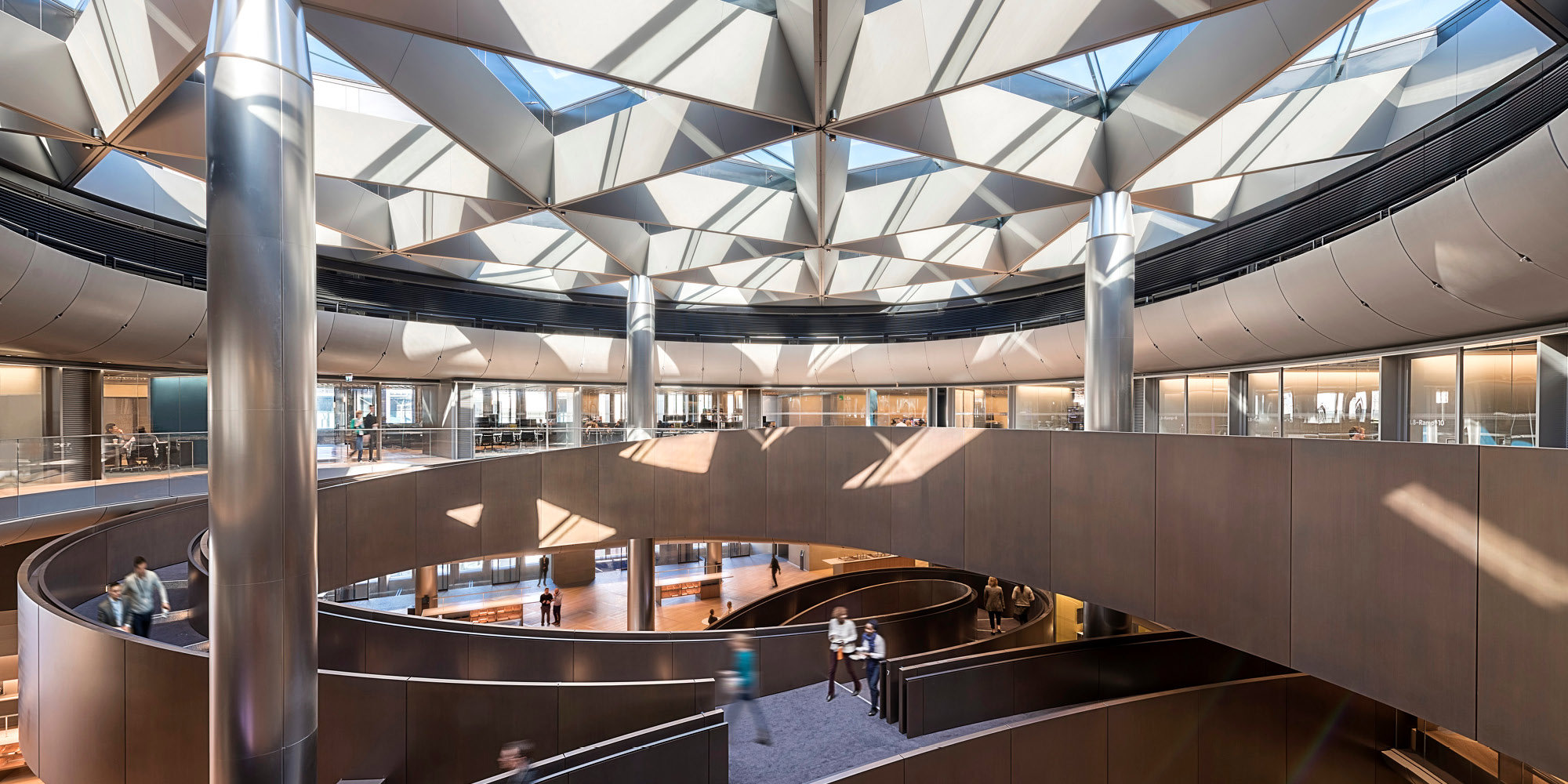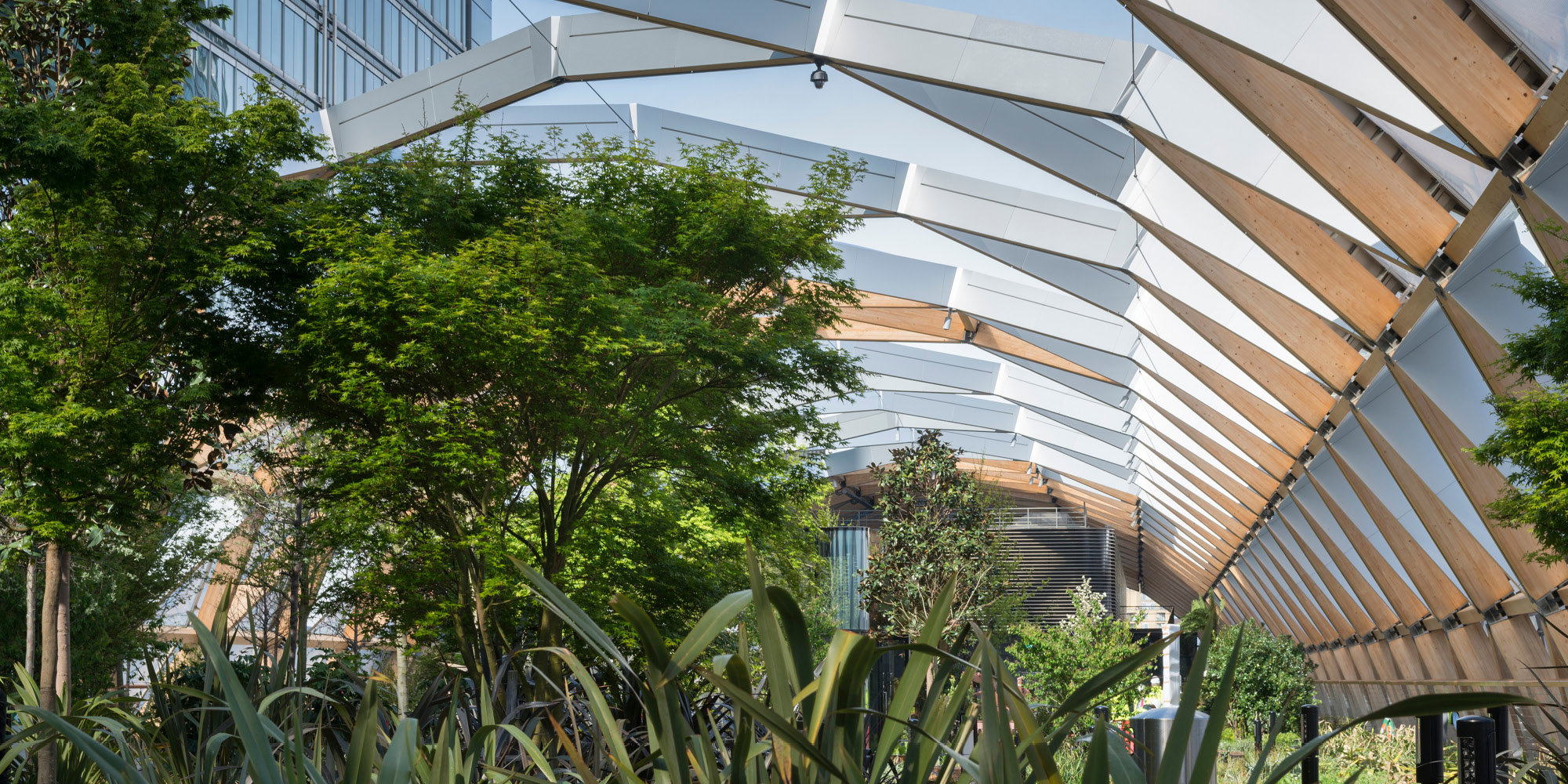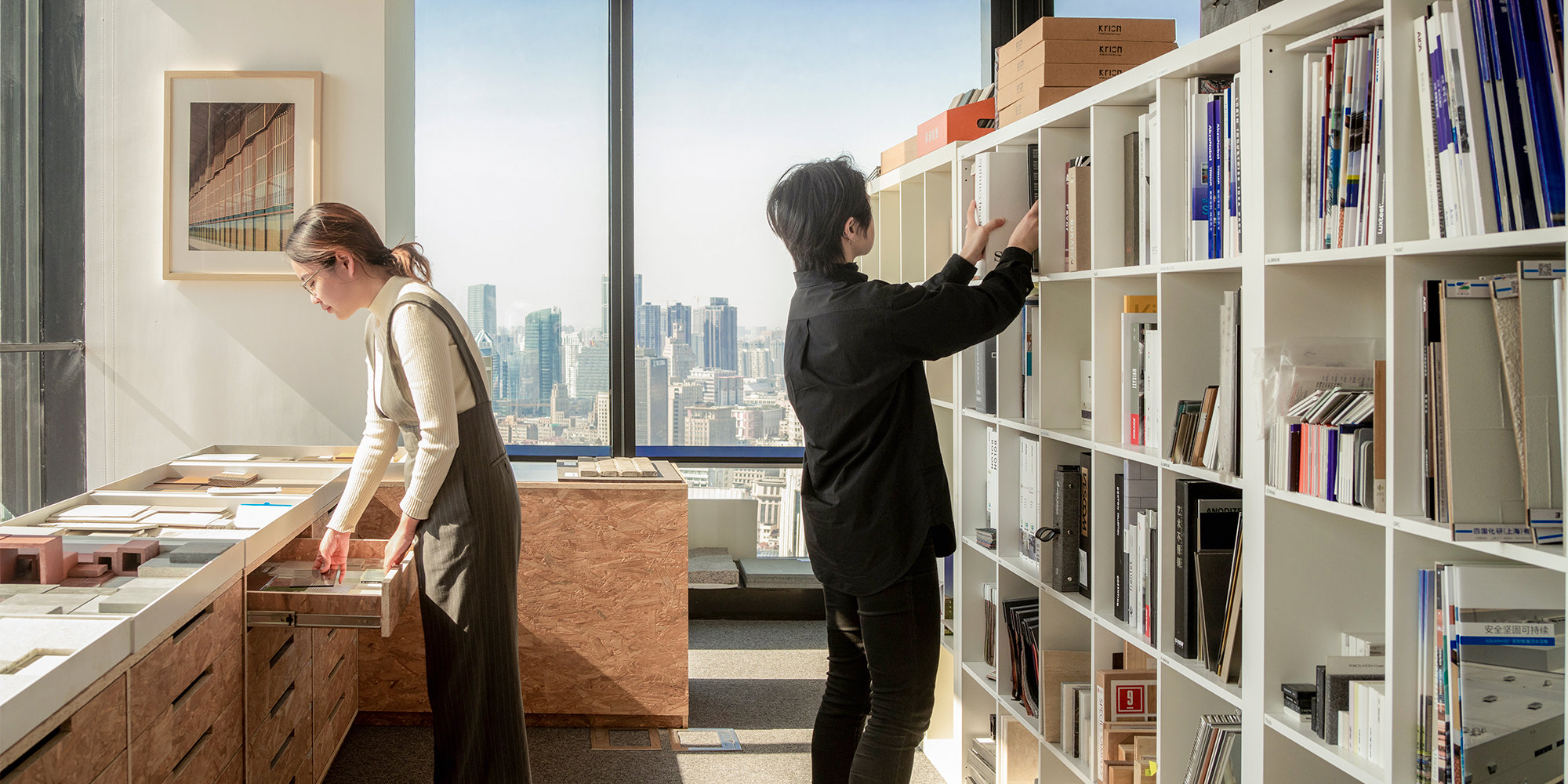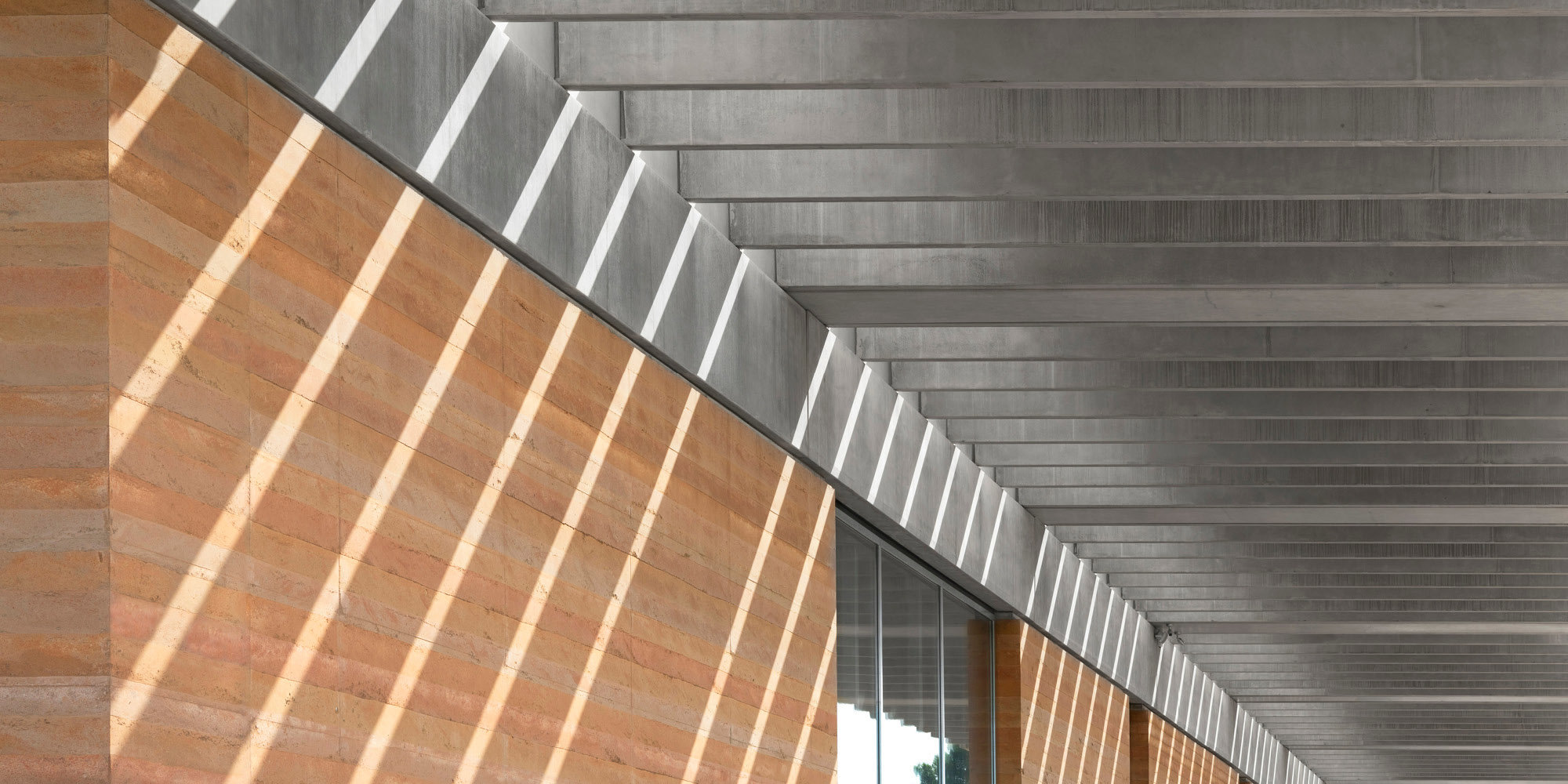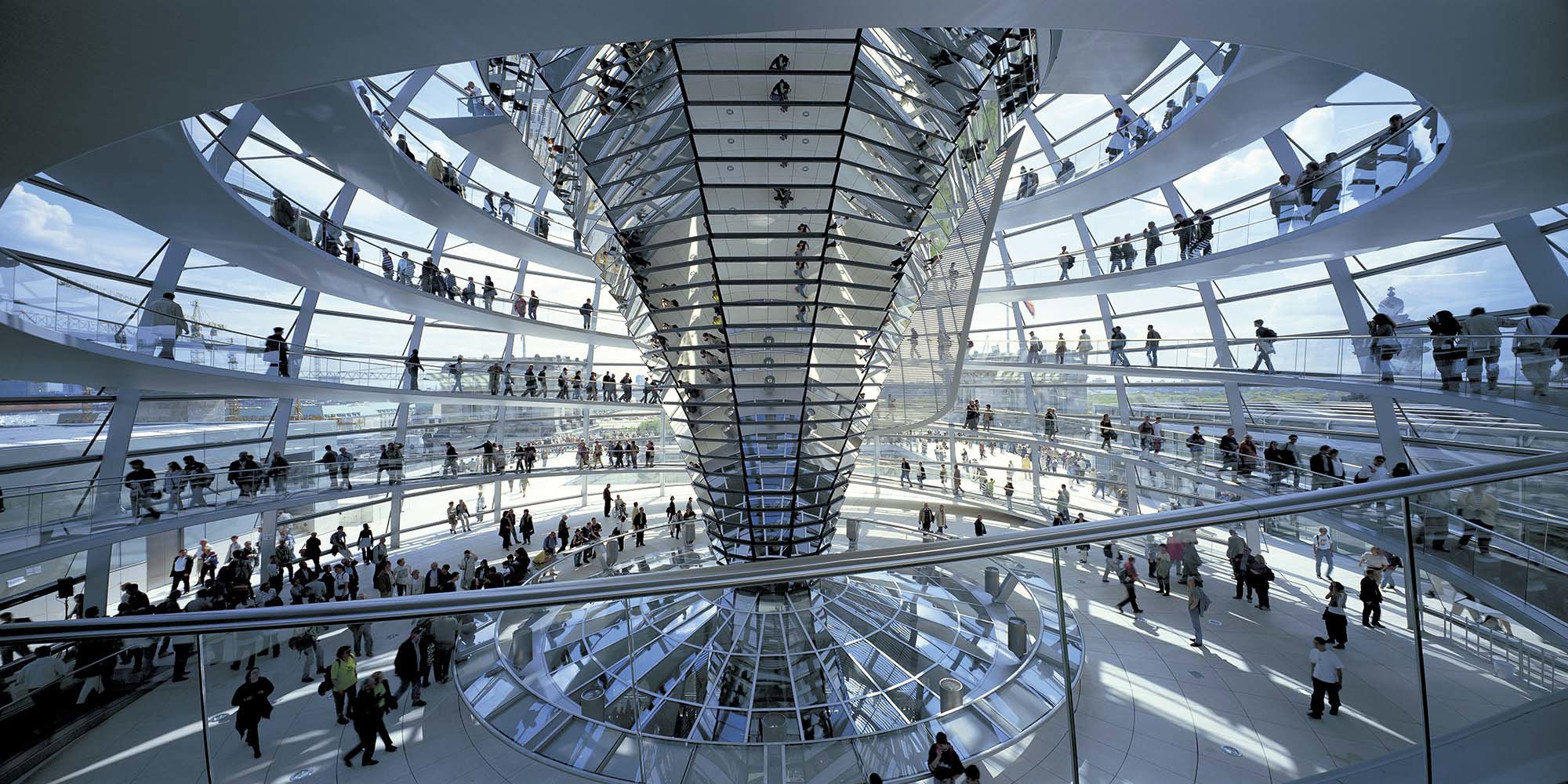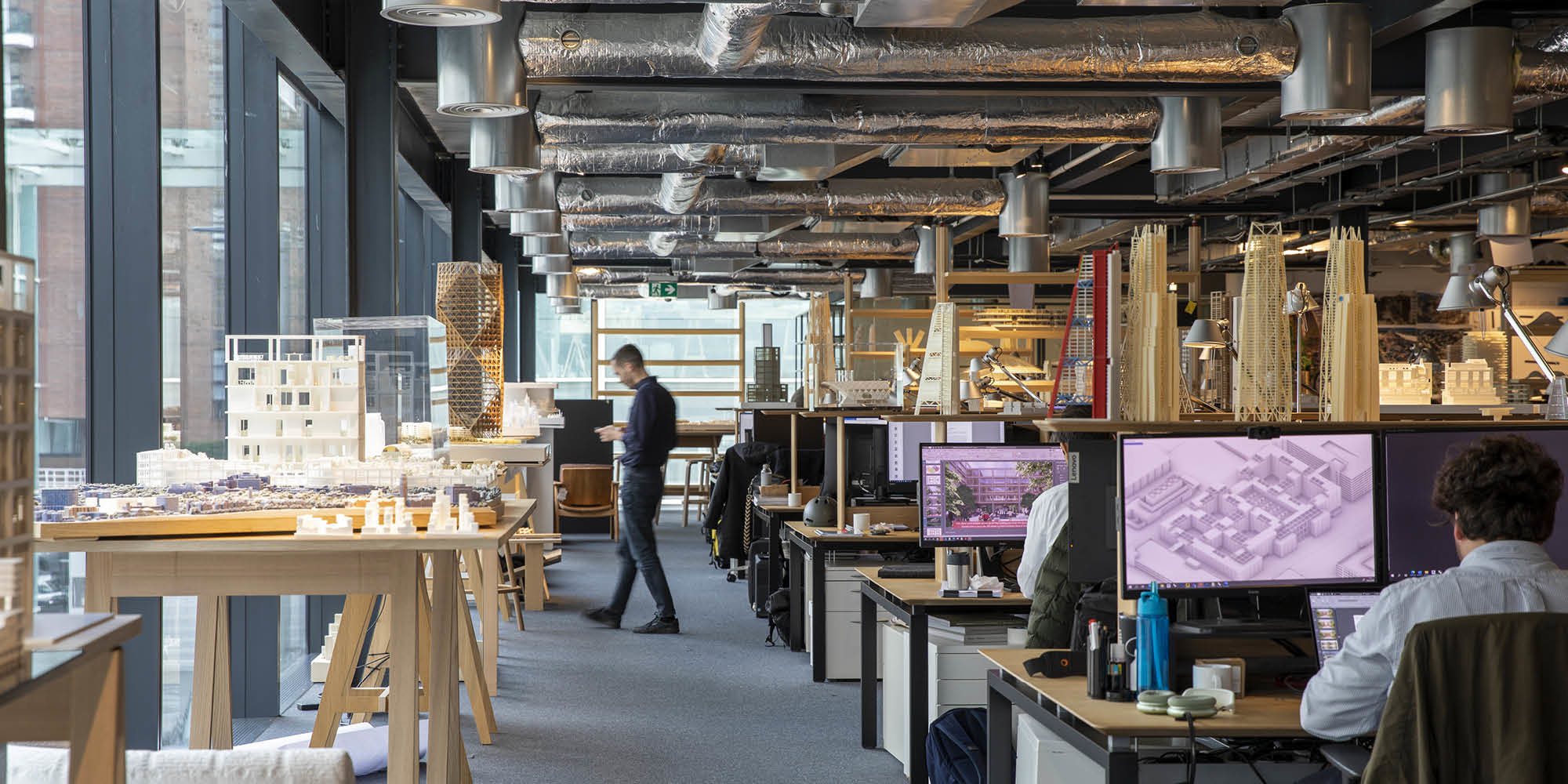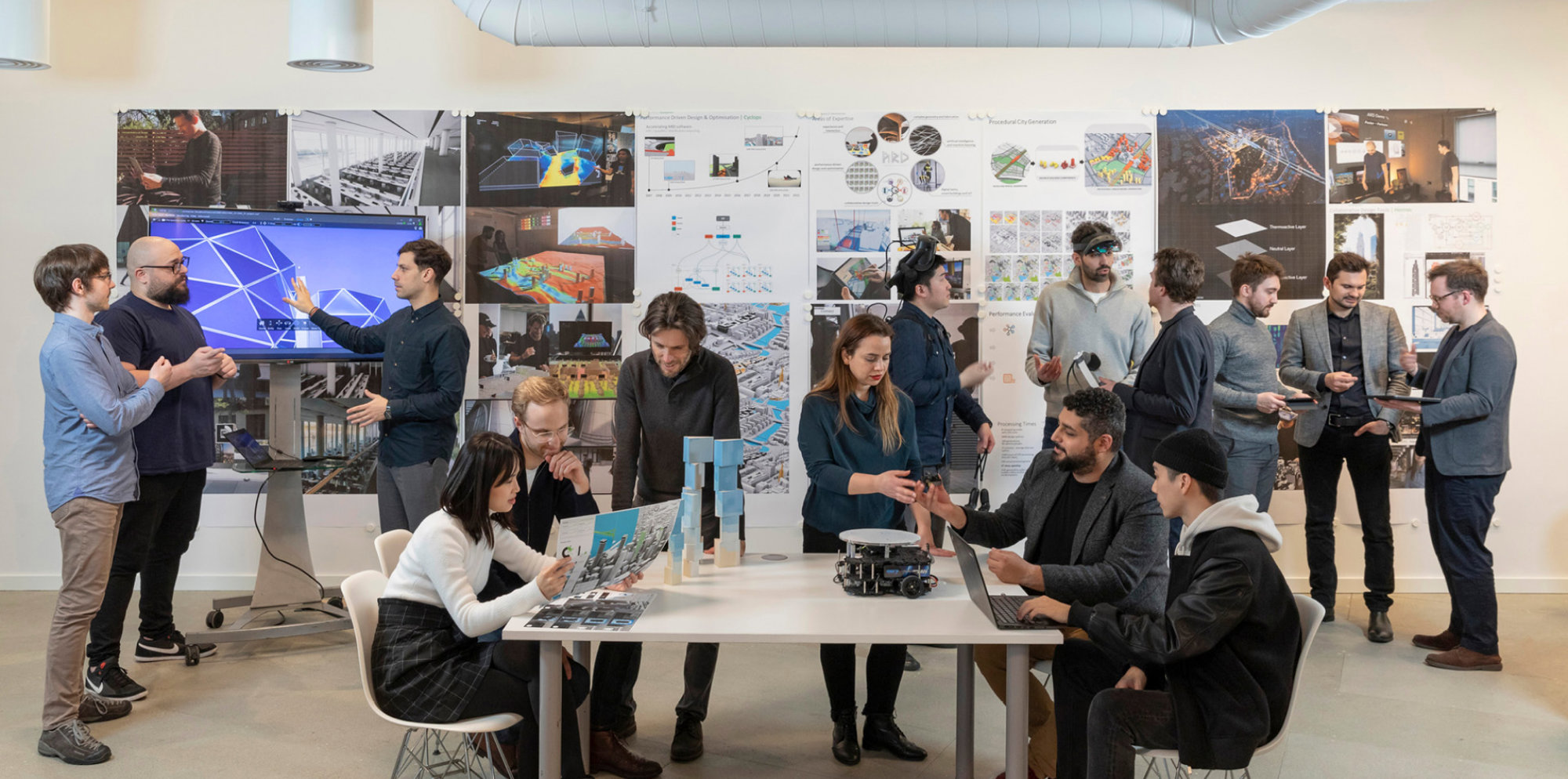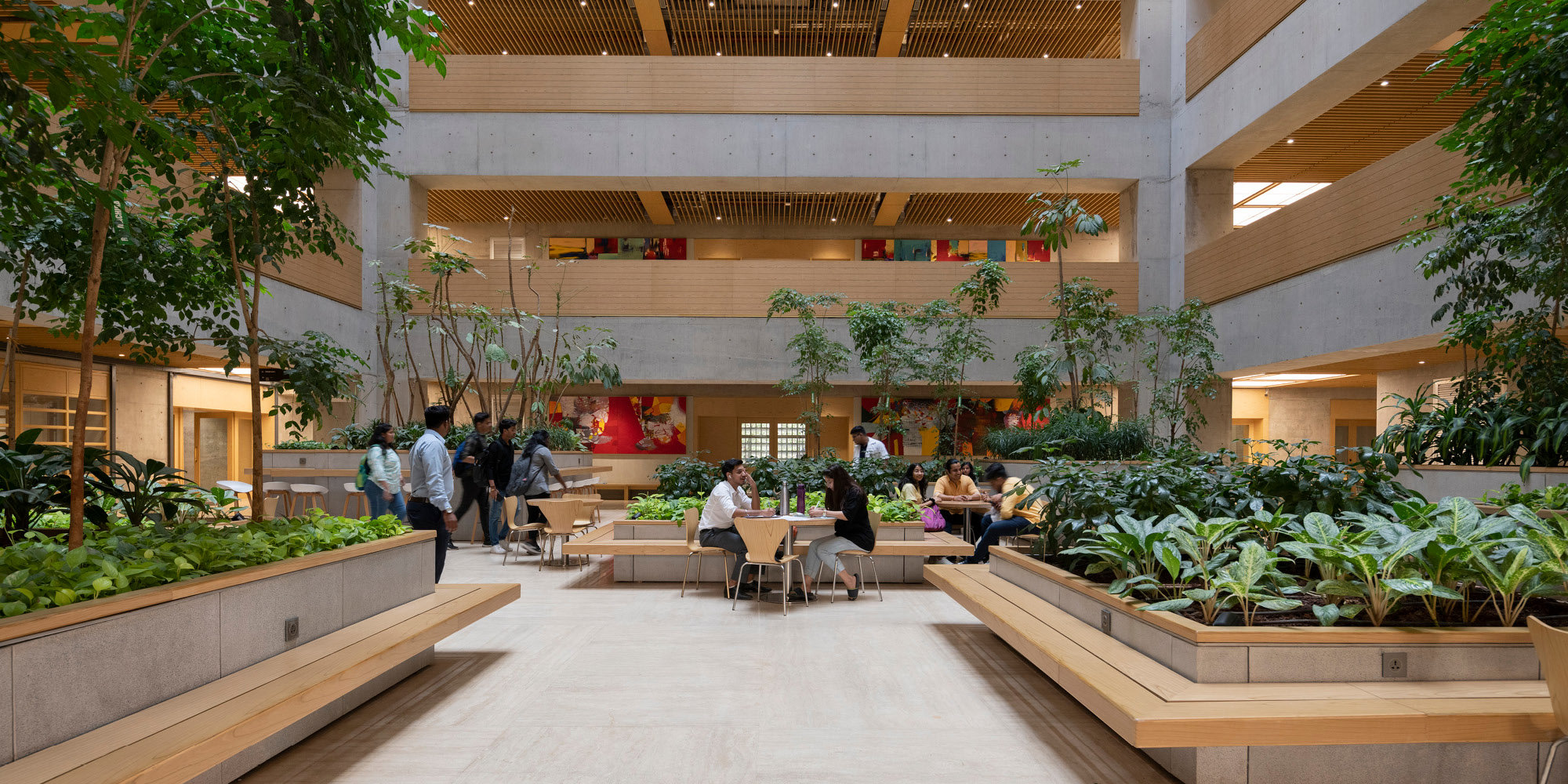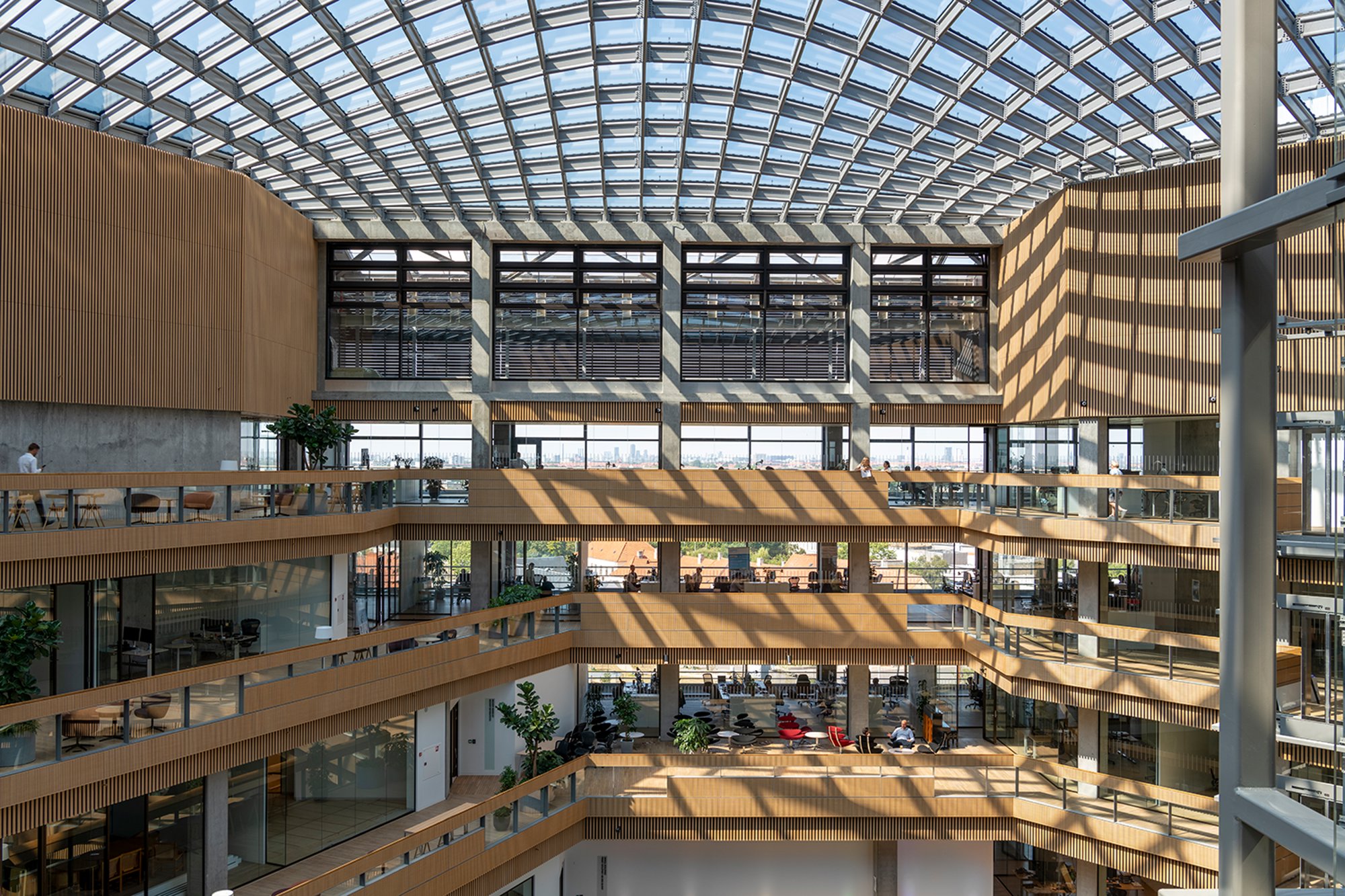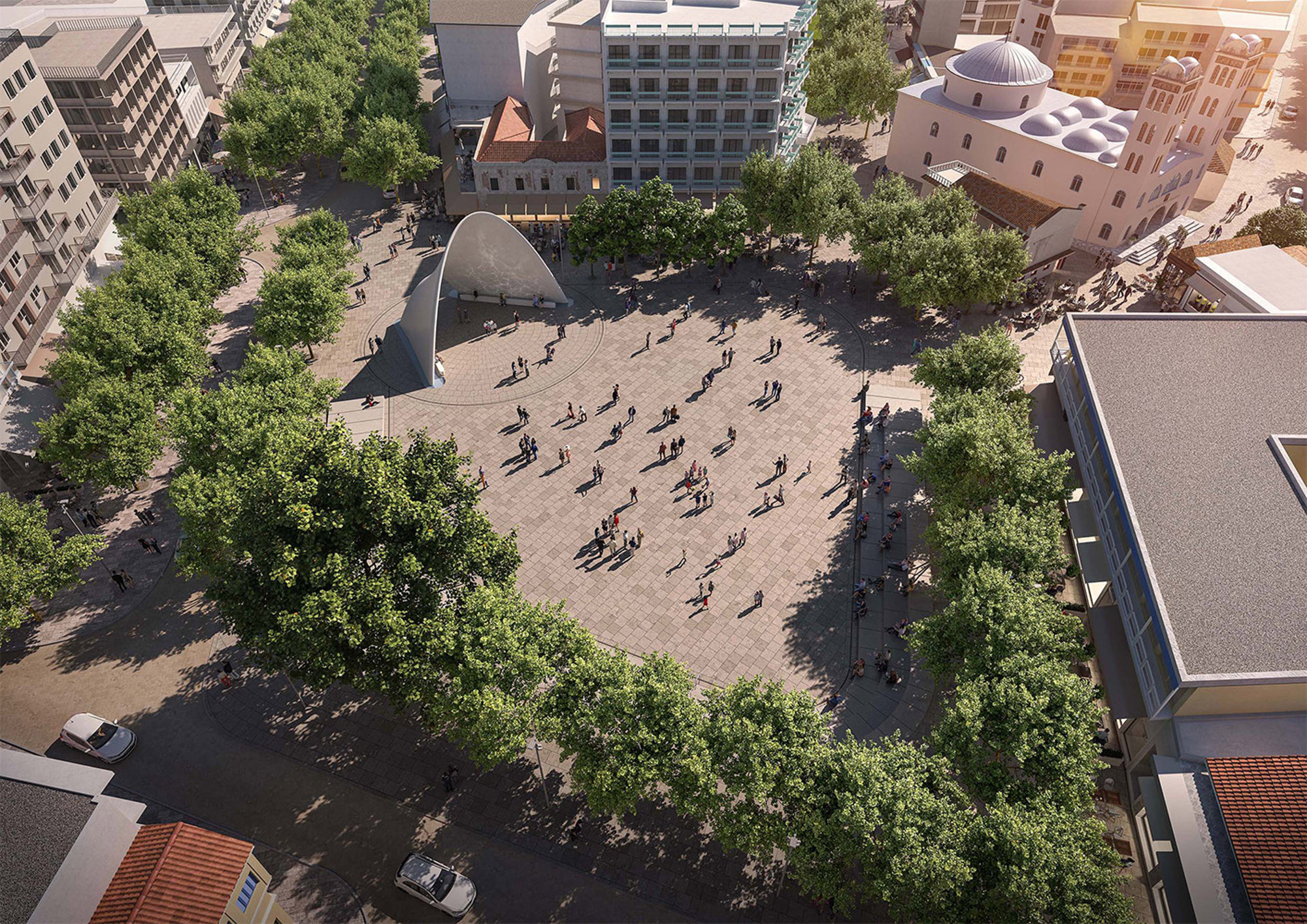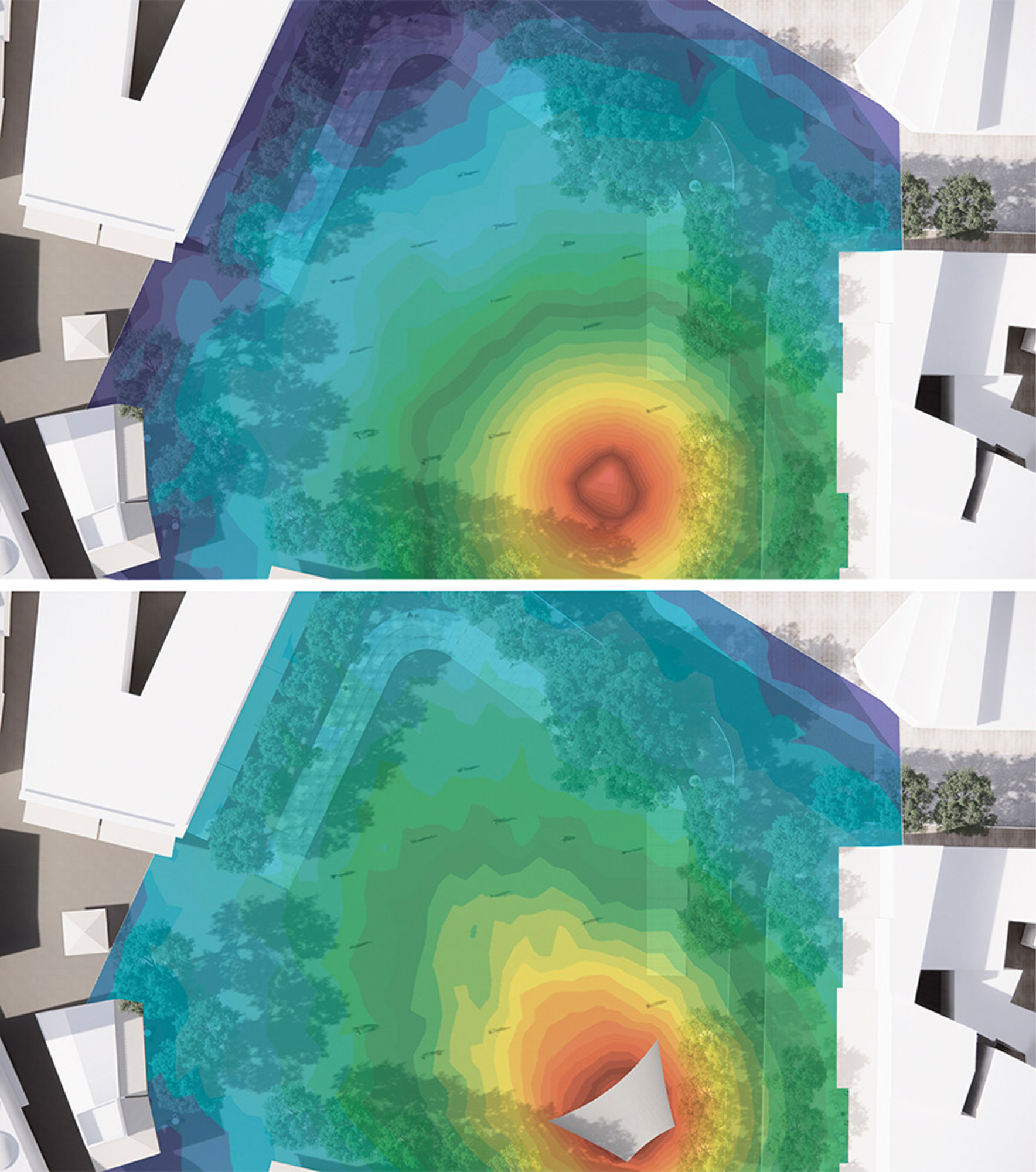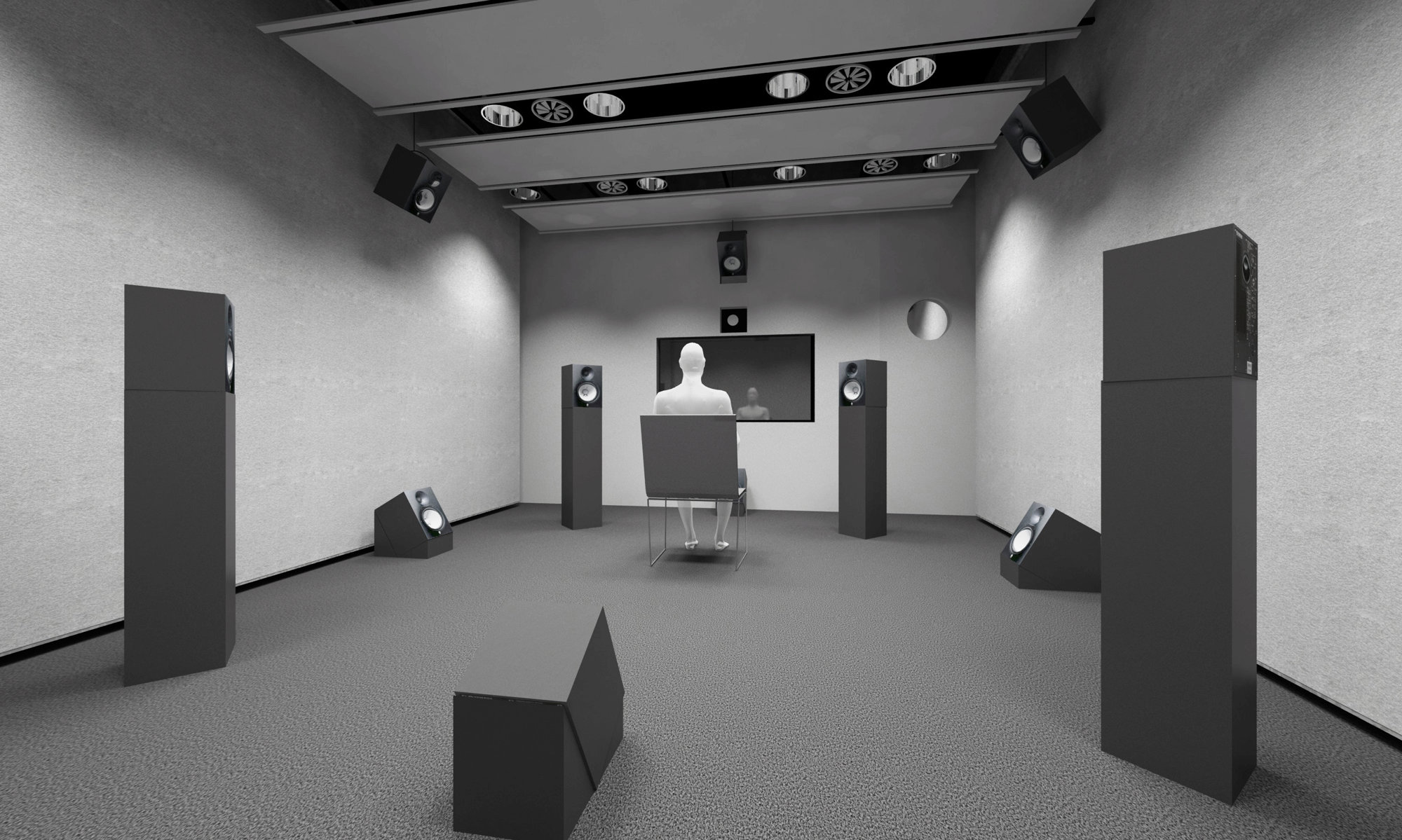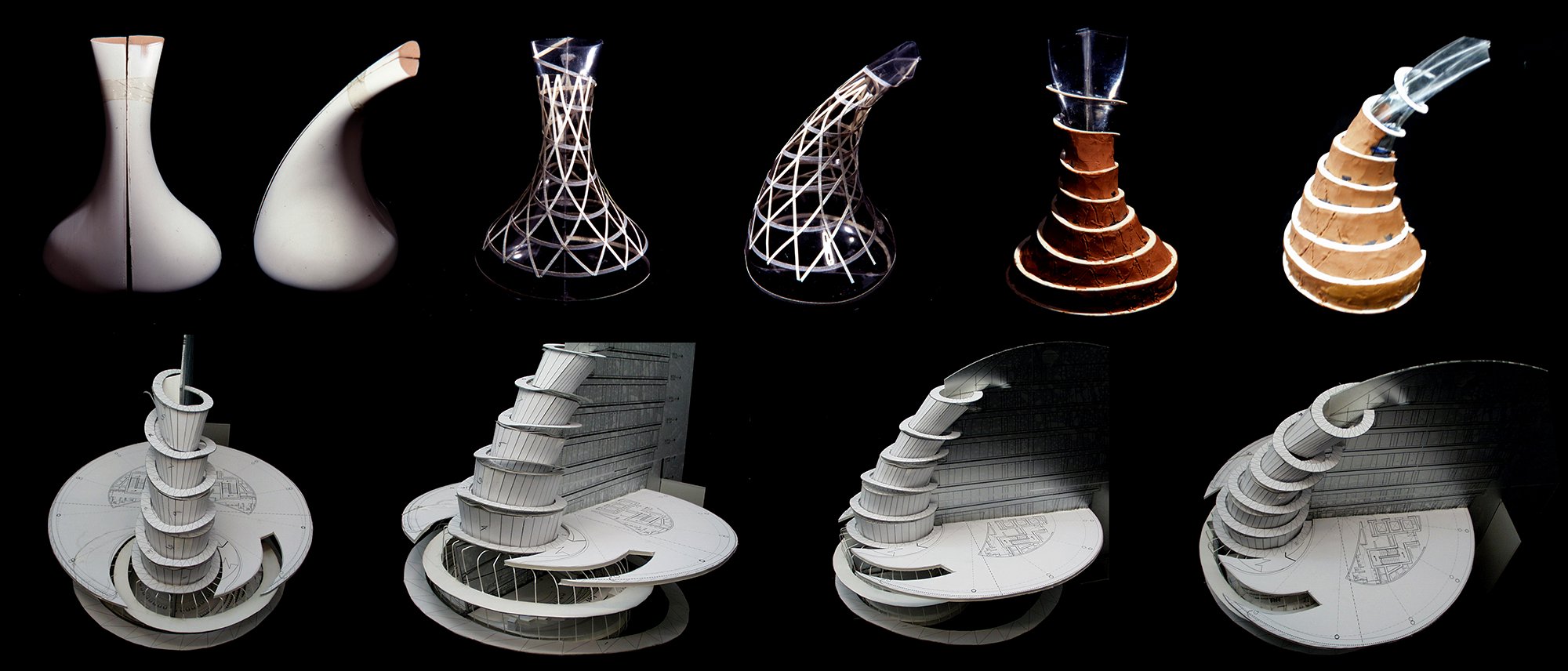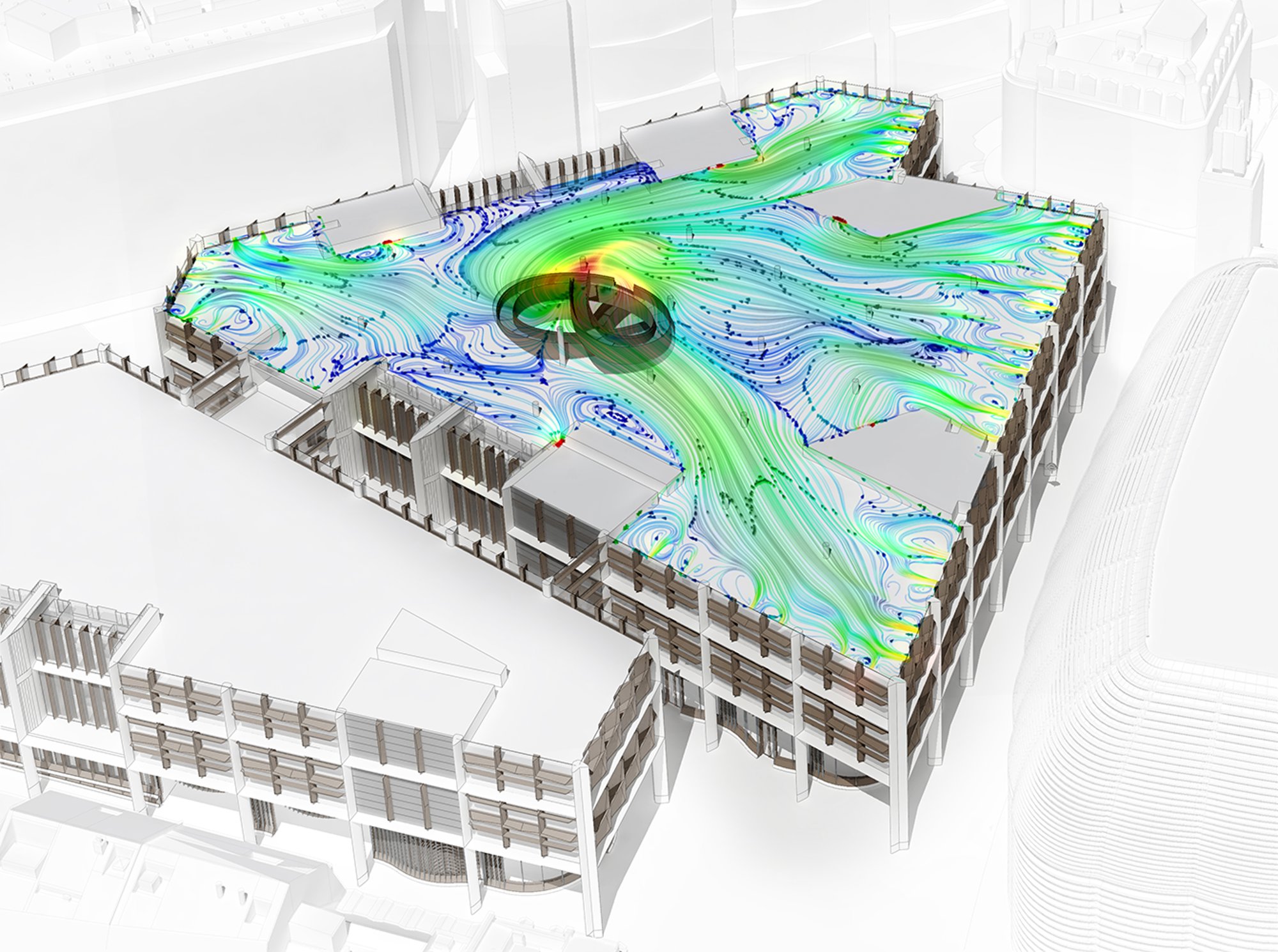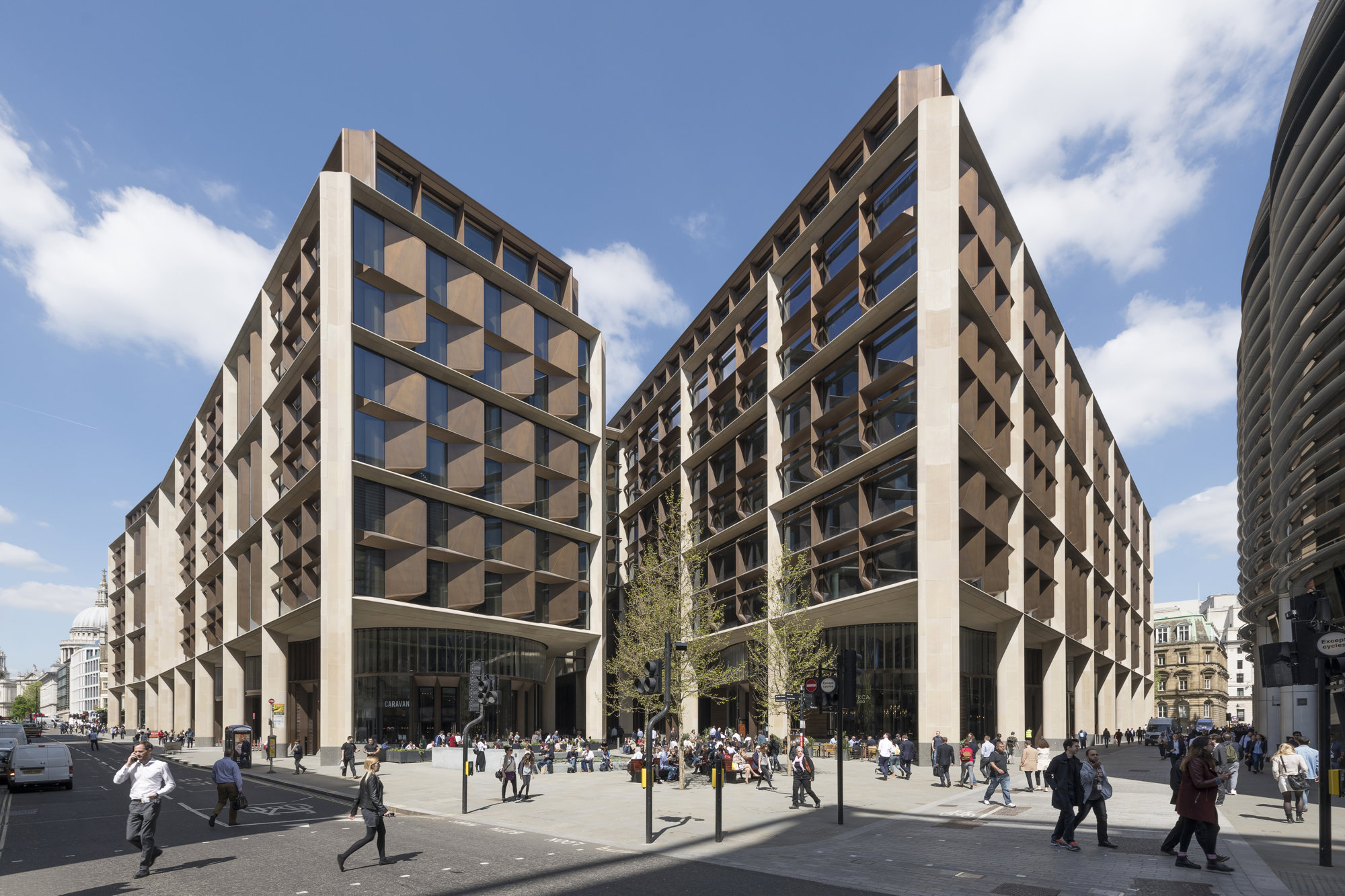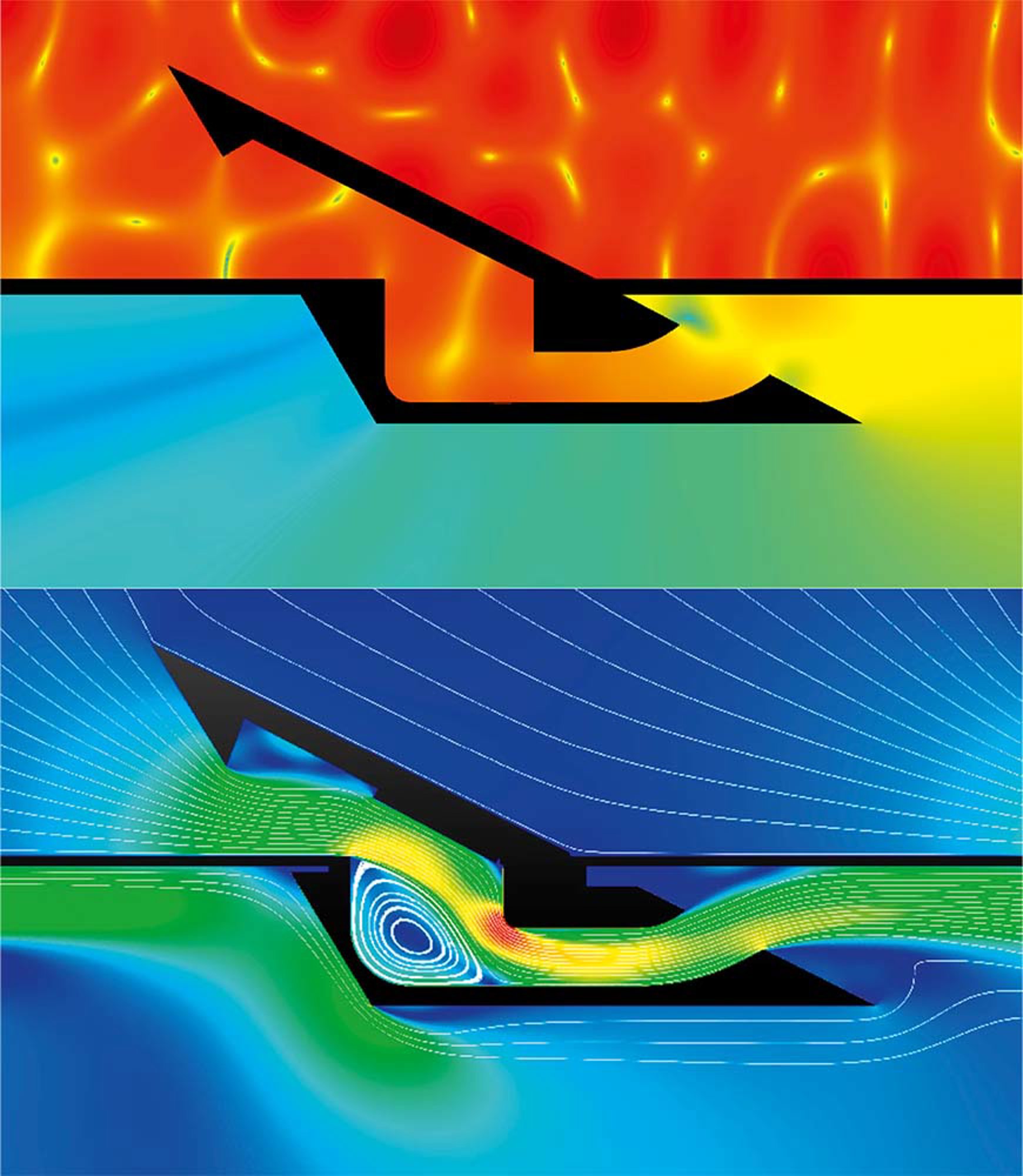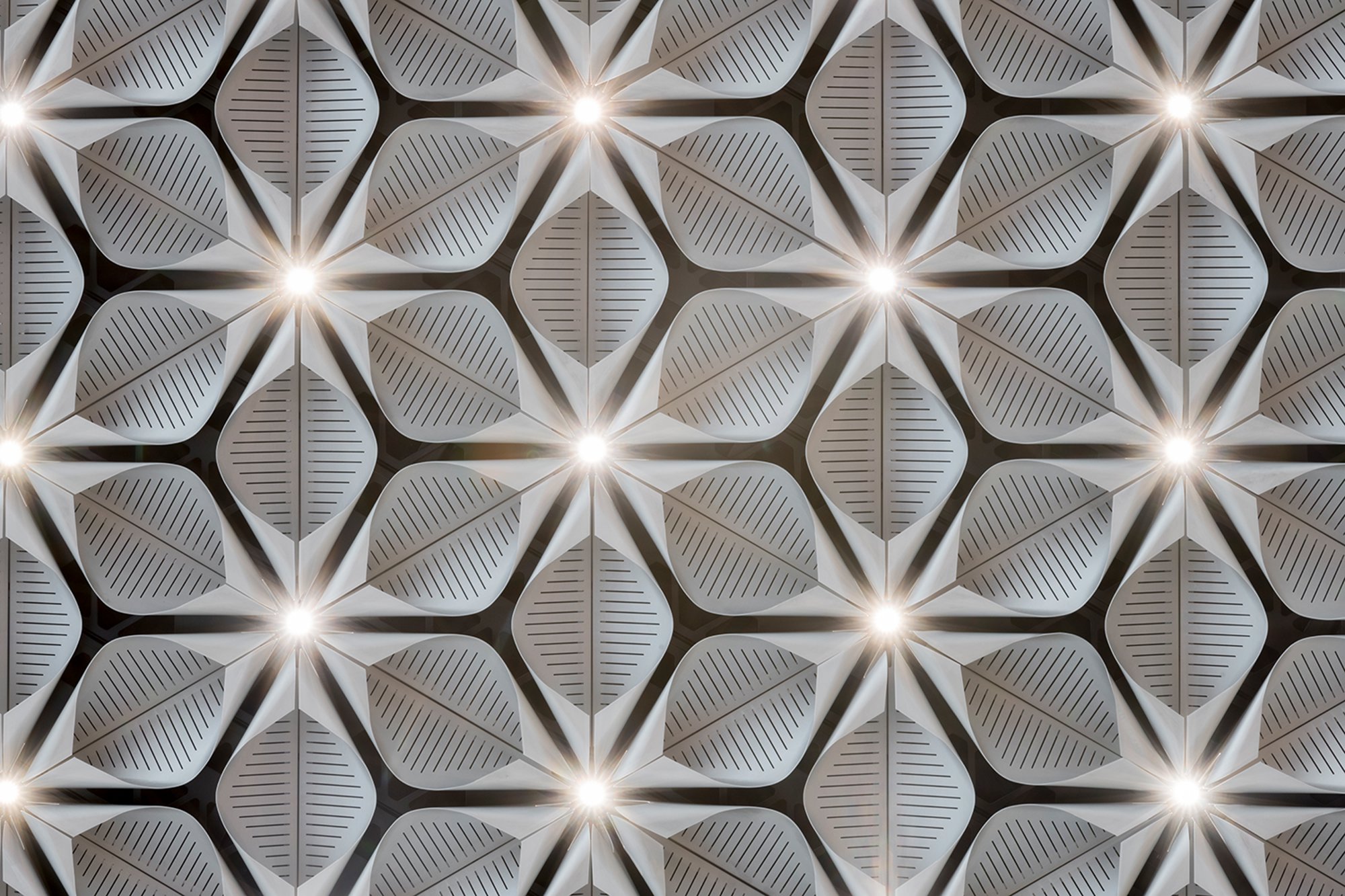Acoustic design is a vital, though often overlooked, stage in architectural and urban planning. Understanding design as an inherently multisensory practice, where buildings are not only seen but heard, Antonella Bevilacqua and Andy Acred discuss how acoustic engineering supports the architectural structures designed at Foster + Partners today.
16th May 2023
Building From the Sound Up: Acoustic Design at Foster + Partners
Seen or Heard?
For thousands of years, acoustics have informed spaces. From the theatres of ancient Greece, through the Gothic cathedrals of medieval Europe, to the studios, performance venues, and even offices of today: sound has been a key player in the development and reception of architectural space. A good building can enhance the sonic environment, make it clearer, more peaceful, more vibrant; a bad building is noisy, too reverberant, eerily silent.
Acoustic design, an often-invisible practice, remains a crucial feature in architectural and urban planning. Acoustics not only inform space – influencing the materials and geometries selected for a design – but are formed by it – resulting in soundscapes and effects textured with sensory information. A complex understanding of both acoustics and architecture is necessary for negotiating this sound and space relationship. By firstly understanding acoustic design as a collaborative practice, then mapping this practice across a range of Foster + Partners’ projects – including The Canopy and Bloomberg Headquarters – the structures of a sound and space relationship can be considered across technological, biophilic, and sociocultural terms.
Hall One of the Sage Gateshead, Northern England, in 2009. Arup Acoustics and Bob Essert, of Sound Space Design, collaborated with Foster + Partners on the acoustic engineering. The ‘shoebox’ shaped hall is designed to accommodate a variety of musical genres - from hip-hop to folk, jazz to classical. For amplified music, a drier acoustic is achieved by drawing out motorised sound-absorbed curtains, which can cover as much as 90 per cent of the wall surface. © Nigel Young / Foster + Partners
Innovation and Limitation: Acoustic relationships
The relationship between sound and space has evolved, adapting to the varying acoustic requirements of a social group. The recent turn towards sustainable architecture has also implicated acoustic design by demanding more carbon-efficient and ethically responsible materials. Today, architectural acoustic design intersects several disciplines at all stages of a project – from conception to completion. Acousticians must remain flexible in their thinking, applying expertise at the right moments.
Acousticians must remain flexible in their thinking, applying expertise at the right moments.
It has long been Foster + Partners’ concern to orchestrate the integration of complex engineering – such as acoustics – with the fine art of architecture, and a fitting example of this was for the studio’s innovative intervention into a building appropriately known as America’s ‘Temple of Invention’ – the Kogod Courtyard at the Smithsonian Institution in Washington, D.C.
The practice proposed enclosing the existing courtyard with a glass roof that would admit sufficient daylight to sustain public events and greenery, yet shut out the weather. Not surprisingly, the simplicity of this brief belied the depth of the challenges. The ability to enjoy music, speeches, and regular conversation in the courtyard was a critical acoustic requirement. That meant countering the long reverberation time that a glass roof and stone facades would normally induce. Innovative acoustic engineering would be essential.
A detail of the roof structure for the Kogod Courtyard at the Smithsonian in Washington, D.C. The primary structure is made from hollow steel beams. These are always perpendicular to the roof plane to minimise their appearance. Acoustic panels – made from recycled denim fibre – line the beams and are held in place by metal rods. © Foster + Partners
Integrating and balancing the many technical demands became the primary engineering focus of the project. An integrated solution for the roof reduces what would normally have been about a ten-second reverberation time in the space to just three seconds. The surface of each beam in the steel frame is covered by a grille of horizontal 15mm-diameter rods. Behind these rods, a grey fabric lining conceals shredded denim material, which acts as an acoustically absorbent muffler immediately beneath the glass panels. Almost 9,000 pairs worth of used jeans were sustainably recycled into the roof.
As well as an example of inter-disciplinary collaboration, the Kogod Courtyard also neatly illustrates two acoustic concepts that are critical to almost every design. The first is insulation, the control of sound exchange between adjacent spaces, which could be within a building or between outside and inside. High levels of insulation might be required between residential units or, as at the Smithsonian, between a building and its surrounding urban environment (such as a busy street, or airport runway). Conversely, insulation might be reduced across certain spatial divisions so that speech can be clearly understood.
This is cutting-edge trial and improvement design, occurring across disciplines.
The second key concept of acoustic design is absorption, which controls the reverberation in a room – the time it takes for sound to decay away. Large spaces with hard surfaces, such as churches or atria, are more reverberant; they provide a feeling of immersion within the acoustic environment. However, for event spaces, meeting rooms or recording studios, where clarity of speech or music is critical, adding soft, acoustically absorbent materials – like fabric panelling – is needed to reduce reverberation and provide a calm, controlled environment. In addition to insulation and absorption, the function assigned to space is linked to its form and geometry, which also affect sound. It may be desirable to use convex curved features within a performance venue to scatter sound evenly from the stage to the audience, for example. Different priorities may apply elsewhere; enclosed booths that block line of sight (and sound) would be more appropriate in a quiet working space, where privacy is crucial.
Often, different priorities occur within the same building – especially when a mixed-use design ethos is at play. Foster + Partners’ recent Ferring Pharmaceuticals Building in Copenhagen, for example, required sensitive, site-specific acoustic thinking. The central atrium creates open and connected social space, with wooden acoustic panelling strategically placed to absorb excessive noise and prevent a ‘cathedral’ effect. The perimeter offices on each floor continue this project of connection; glass dividers and windows offer external views of the Baltic Sea and internal views of the atrium, connecting users with both the natural world and one another. These perimeter offices, in addition, had to deliver high levels of acoustic privacy. This was achieved by selecting well-insulated glass with precise fitting instructions for the construction team so that sound could not ‘leak’ in or out.
Evidently, the acoustic profile of each Foster + Partners project is unique; during the design phase, the acoustic performance of a given space can be modelled using sophisticated software that reflects the geometry and the properties of a project’s specific materials. If the outcomes of these predictions are not compatible with other parties – such as fire, thermal, plumbing, mechanical and electrical engineers – further adjustments are required. Other metrics, including the sustainability of materials, are also considered. The cycle of acoustic innovation in step with spatial and environmental limitations repeats, each time refining the material properties and geometry of an environment to provide the best possible acoustic experience. The various limitations of a project, paradoxically, allow for an increase in creativity. This is cutting-edge trial and improvement design, occurring across disciplines.
The Canopy
One current and developed example of this design process in architectural acoustics is the Canopy designed for Freedom Central Square, in Drama, Greece. The design proposed by Foster + Partners aims to provide a symbolic and functional focus for the broader masterplan. The acoustic design of the Drama Canopy, owing to its multi-use function as not only a performance space but also a social meeting point, was a paramount focus.
Acoustic calculations were informed by the dimensions and materials chosen by the design team for the Canopy. After a series of models, and various design iterations, a convex canopy (derived from a double hyperbolic curve) was proposed. With this shape, as opposed to an initial concave cantilevered shape, the sound is more uniformly distributed in the square. The structure was also considered more stable from a seismic standpoint.
Acoustic Modelling
A variety of technological tools produce these types of acoustic predictions. One software program, for example, can model the acoustics of a room. Another can model outdoor sound propagation, allowing the impact of noise sources (such as traffic) and the efficacy of mitigation measures (such as barriers or acoustic enclosures) to be assessed. Other programs can be used to calculate the insulation performance of wall partitions or to edit and process audio. This diversity of software, combined with a specialist’s ability to interpret and translate its results, means that the acoustics of a wide range of projects – from a retrofit to a city masterplan – can accurately be modelled and assessed.
The installation of a canopy in Drama’s Freedom Central Square is beneficial for supporting music performance at live events. Comparing the two selected scenarios (i.e. empty square, above, and square with a canopy, below), the spatial distribution of sound energy at each point increases by about five to seven decibels. © Foster + Partners
Auralisation
One key tool for communicating the acoustic experience is auralisation. Auralisation is to sound what visualisation is to sight; both processes appeal to a sensory mode to communicate an idea or experience. An auralisation virtually places a listener within a proposed space. This can occur in virtual or augmented reality and is often used with specialist headphones and headsets. This innovative branch of acoustic engineering is considered indispensable for the accurate simulation of sonic effects, especially during the design phase when stakeholders, who might not be acoustically trained, want to experience its soundscape. It is also a powerful method for directly comparing two or more options and to guide decision-makers to select the most suitable acoustic design.
This digital realisation of sound – rather than taking us further from the material world – brings us closer to the spatial realities of acoustics and, by extension, of architecture. People hear in three dimensions, all the time; even when we are looking ahead, we are constantly receiving sounds from areas we can’t see – above, below, behind. Our brains instantaneously process this information and build a 3D image of the space around us. In other words: we can use the ear to see. Auralisation harnesses this immersive fact of acoustic design, and, in doing so, brings to the fore the spatial and material aspects of architecture. The visual representation of a building, usually expressed in sketches, plans, photographs, or films, risks flattening and muting it. Auralisation resists this flattening – or rather, perceives a space in ways that bypass or build beyond vision.
Acoustic Technology and the Natural World
The link between sound and spatial perception did not suddenly emerge with virtual reality technology (although the technology certainly helps to reveal this link): it is part of the natural, material world. Foster + Partners’ design for London City Hall, for example, acknowledges the naturally occurring acoustic structures and considers how these structures might be brought into the fabric of an urban design.
Models explore the form of the organic-shaped ‘container’ at the centre of City Hall, London. The design came out of a series of studies to create the purest possible acoustic for the space, which contains a public Assembly Hall. Speakers can talk without microphones and visitors can stand at the top and hear what is going on at the bottom. © Foster + Partners
A biophilic approach to design is also closely related to the mood and emotions of a space. The natural world is not only a source of acoustic modelling but generates sounds (rain, the surf of the sea, birdsong in a tree canopy) that have been proven to reduce stress and anxiety and increase concentration and relaxation. Sometimes desirable sounds are carefully introduced into a space to mask unpleasant noises (such as airplanes, traffic, or mechanical ventilation). James Carpenter’s water feature, Icefall, in Foster + Partners’ Hearst Tower and the integration of a tropical canopy in the South Beach project in Singapore are two examples of this site-specific sonic sensitivity. Acoustic design, then, must adopt a symbiotic relationship with the surrounding environment, working with both passive and active, natural and industrial strategies.
Acoustics and Natural Ventilation
Natural ventilation is one such example of adaptable, biophilic design and has been a key feature of several Foster + Partners projects, including Commerzbank, Frankfurt (the first naturally ventilated tall building), 30 St Mary Axe, and more recently Apple Park, California. By bringing fresh air directly inside from outside (when the temperature allows), natural ventilation saves energy by reducing reliance on mechanical equipment and allows users to comfortably experience their climate. However, since any opening that allows air in from outside will also allow sound in, this may be disruptive in busy urban locations; conflicts such as these often emerge in multidisciplinary design.
One of Foster + Partners’ most notable projects in terms of both acoustics and ventilation is the Bloomberg headquarters in London. The project had to overcome the challenge of naturally ventilating a large, deep-plan building in a busy and noisy central London location. To do this, custom facade openings – visible from the outside as distinctive vertical bronze fins – were designed to both freely allow fresh air into the building and to block outside noise. Ventilation openings at the top of a central atrium were introduced to avoid noise disturbance from rooftop equipment.
Inside, between the office floors, is the multifunctional integrated panel ceiling, with its unique aluminium ‘petal’ design. These unique petals were shaped to maximise the cooling potential of the radiant ceiling, while allowing sound to pass through to the acoustic absorption installed behind, on the soffit, thus allowing for control of reverberation within the space. The petals also scatter sound, thus improving privacy – always a challenge in an open-plan environment.
Bloomberg is a key demonstration of integrating acoustic engineering into a broader design process. Its BREEAM Outstanding rating (the highest green rating possible under this assessment) attests that there is a place for acoustic design within the complex network of aesthetic and mechanical practices that comprise a sustainable building. Acoustics should not be an ornamental post-script since their early consideration in the design process can vastly improve a user’s experience of a space. Rather, the key is early and sustained collaboration.
Architecture as Orchestra
The work of acoustic engineers, environmental design analysts, and a host of other technical and design specialists within Foster + Partners affirms two things: the continued importance the practice places on considerate acoustic design in its contemporary projects and its experience and understanding of architecture as an inherently multisensory practice. By developing, communicating, and implementing specialist expertise, acoustic design at Foster + Partners works across multiple disciplines within the studio – digital and analogue, technical and creative, sustainable and cutting-edge.
Acoustic design must adopt a symbiotic relationship with the surrounding environment, working with both passive and active, natural and industrial strategies.
Designer Bruce Mau argues that in a field ‘caged by vision,’ architecture’s aim should be one of ‘orchestration.’ Mau’s ‘orchestration’ is a wonderfully aural metaphor that reminds us that buildings are not only seen but heard. Acoustic design, like architectural practice in Foster + Partners in general, lends itself to a model of ‘orchestration’. Each participant offers a distinct set of skills which, when conducted together, create unique harmonies and rhythms, perhaps even productive dissonances. By building from the sound up, the interdependent design decisions that influence sound can be newly considered and appreciated. Only through this attunement to architectural space can new possibilities be heard.
Author
Andy Acred and Antonella Bevilacqua
Author Bio
Andy Acred is an Environmental Design Analyst at Foster + Partners. As part of the Specialist Modelling Group, he analyses the invisible aspects of our indoor and outdoor environments – airflows, thermal comfort, and sound – with a view to guiding the design of healthy, sustainable spaces. He joined the practice in 2016 after completing a Ph.D. at Imperial College, London, focusing on natural ventilation design.
Antonella Bevilacqua is the Senior Acoustic Engineer within the Specialist Modelling Group at Foster + Partners. She obtained her MSc in Construction Engineering from the University of Parma, her MA in Highly Artistic and Musical Performance (AFAM) – saxophone – from the Conservatoire of Parma, and studied Acoustics & Noise Control at London South Bank University. Antonella specialises in the acoustics of Greek and Roman theatres and opera theatres and has worked globally, operating in the field of both environmental and room acoustics.
Editors
Tom Wright and Clare St George
